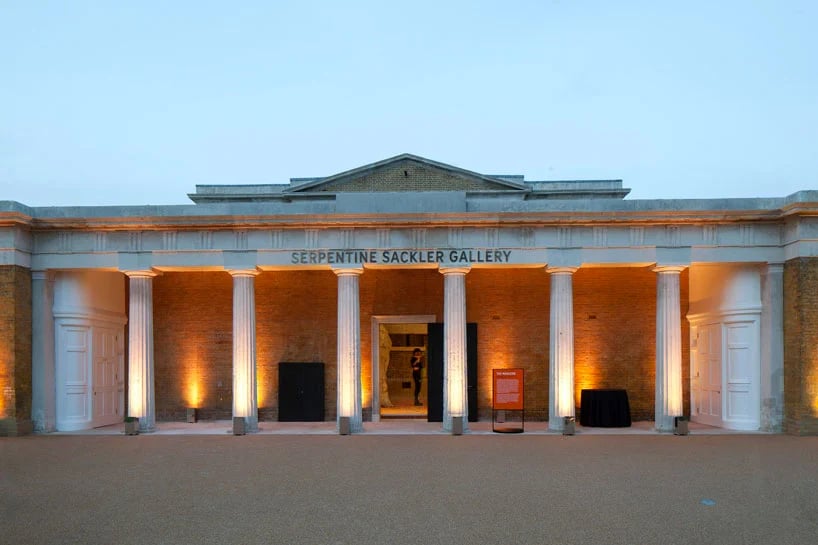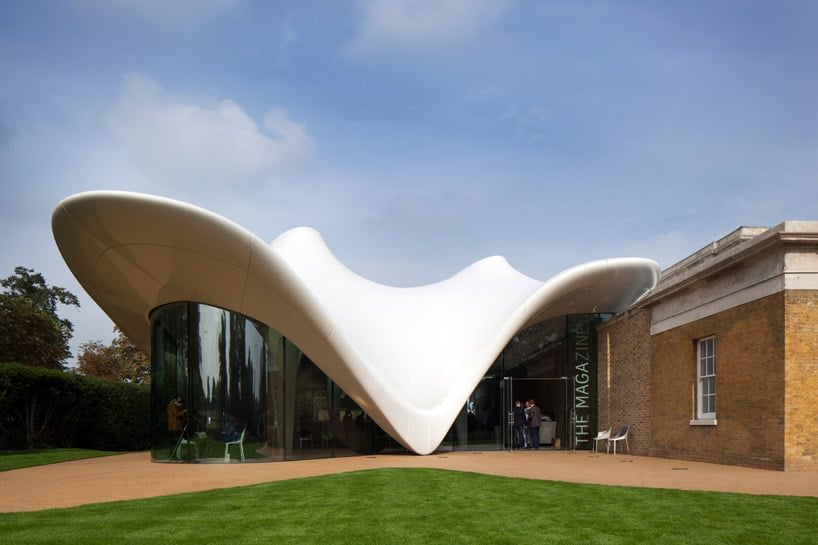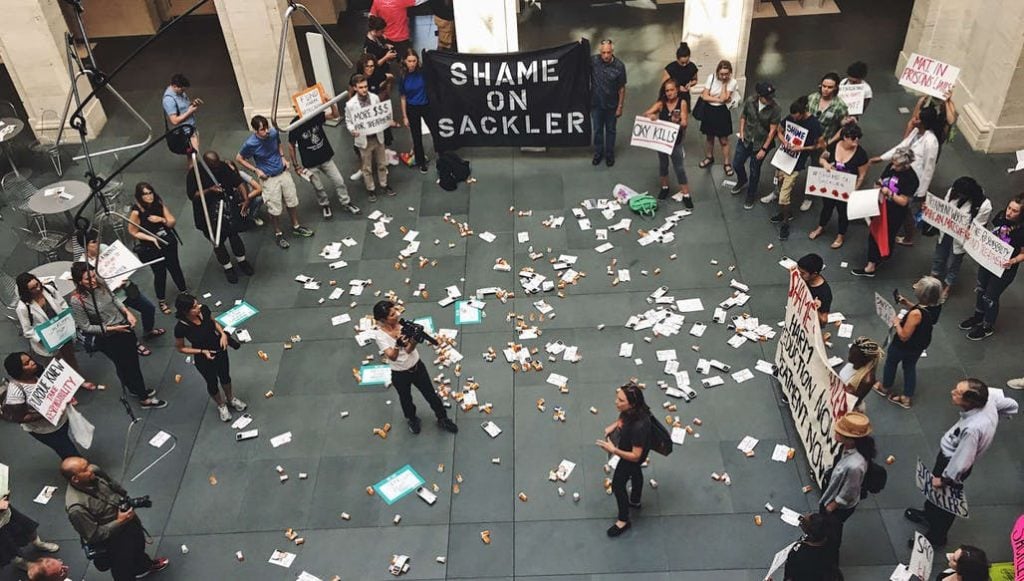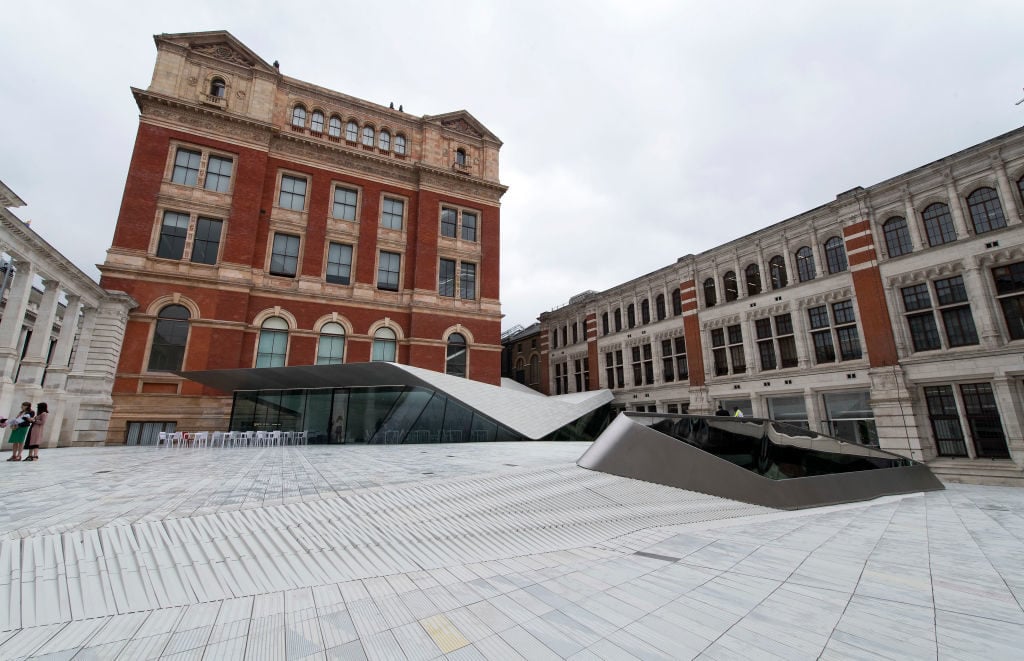Art World
The Serpentine Has Dropped the Sackler Name From Its London Gallery (But Says It Has Nothing to Do With the Family’s Legal Woes)
The former Serpentine Sackler Gallery is now called the Serpentine North Gallery.

The former Serpentine Sackler Gallery is now called the Serpentine North Gallery.

Sarah Cascone

London’s Serpentine Galleries is doing away with the name of the disgraced Sackler family, whose longstanding philanthropy in the arts and sciences has been overshadowed in recent years by their ties to the opioid epidemic.
One of the institution’s two galleries, the Serpentine Sackler Gallery, is now listed on both the museum website and on Google Maps as the Serpentine North Gallery.
The gallery opened under the Sackler name after a redesign, by architect Zaha Hadid, in 2013. The Dr. Mortimer and Theresa Sackler Foundation donated £5.5 million ($7.5 million) to the project—the largest gift in the Serpentine’s history.
The Sackler family’s company, Purdue Pharma, pleaded guilty in October to criminal charges due to its marketing of OxyContin, an addictive painkiller. The $8.3 billion settlement included $225 million in civil penalties to be paid personally by the family.
The Serpentine claims that its name change, which will not involve the sign on the building façade, was not a response to the controversy surrounding the Sacklers, but part of a rebranding.

The Serpentine Sackler at its opening in 2013. Photo ©Luke Hayes, courtesy of the Serpentine Galleries.
“We recently introduced new way-finding terminology to help visitors distinguish between the two galleries. These terms will appear on the website and on all marketing materials,” a Serpentine representative told the Art Newspaper.
Several artists and activists have pressured art institutions to cut ties with the Sacklers. In her 2019 exhibition at the Serpentine, artist Hito Steyerl released an augmented reality app allowing viewers to erase the Sackler name from the building. And since 2017, artist Nan Goldin, who founded the advocacy organization Sackler P.A.I.N., has protested museums that have accepted Sackler funding, including the Guggenheim.
“We did enjoy the irony of the name ‘Serpentine Sackler,’ as it is testimony to the biblical evil of the Sackler Family. As we watch them get away with murder in bankruptcy court, this news gives us some hope,” said Goldin in an email to Artnet News. “But we wish museums wouldn’t dissemble their true motives when releasing these statements and would give credit where it’s due. Despite the Sacklers’ army of million-dollar lawyers who can secure them immunity in any court, they will never be able to defend them in the court of public opinion.”
After Goldin threatened to back out of an exhibition at London’s National Portrait Gallery, the museum rejected a $1.3 million gift from the Sacklers in 2019, following the example of the South London Gallery.
Since then, other institutions, including Tate Modern, New York’s American Museum of Natural History, and the Metropolitan Museum of Art, have stopped taking donations from the family. The Serpentine has also previously announced it would no longer accept the Sacklers’ money.

Sackler PAIN protesting the Arthur M. Sackler Museum at Harvard last year. (The museum is named after a Sackler family member who did not benefit from the sale of oxycontin. Photo courtesy of Sackler PAIN.
In 2019, the Louvre quietly took the Sackler name off of its wing of Oriental antiquities. Meanwhile, all mentions of the Sackler Institute, established at New York’s Dia Art Foundation in 2016, have been scrubbed from its website. (Dia told Artnet News in December that it “has not been formally connected with the Sacklers” since 2018.)
But several other institutions still bear the Sackler name. In New York, the American Museum of Natural History is home to the Sackler Institute for Comparative Genomics and the Sackler Educational Laboratory; the Met still houses its Sackler Wing; and the Guggenheim has the Sackler Center for Arts Education.

Sackler PAIN protesting the Louvre in Paris. Photo courtesy of Sackler PAIN.
In London, the British Museum has the Raymond and Beverly Sackler Rooms; the Victoria & Albert Museum has the Sackler Courtyard; the Tate Modern has the Sackler Escalator; and the National Gallery has the Sackler Room. The official job title of the head of the Dulwich Picture Gallery remains the Sackler Director of Dulwich Picture Gallery.
“We will not be considering the removal of any signage related to our past or present donors,” a V&A representative told Artnet News in an email. Likewise, the National Gallery reiterated that it still has no plans to change the Sackler name.
As of press time, none of the other institutions had responded to inquiries on whether or not name changes were being considered. (The Met said the name of its Sackler Wing was under review as of October.)

The Sackler Courtyard at the Victoria and Albert museum in London. Photo by Justin Tallis/AFP/Getty Images.
Other institutions that have naming ties to members of the Sackler family who were not involved with Oxycontin include the Smithsonian’s Arthur M. Sackler Gallery, which will keep its name as part of the terms of a donation of $4 million and more than 1,000 works of Asian art from Arthur Sackler, who sold his ownership stake in the pharmaceutical company years before OxyContin came to market. (The Smithsonian’s two Asian art museums, the Sackler and the Freer Gallery of Art, have been collectively rebranded, however, as the National Museum of Asian Art.) The Elizabeth A. Sackler Center for Feminist Art at the Brooklyn Museum is named for Arthur’s daughter.
Purdue Pharma is currently involved in ongoing bankruptcy litigation. The company submitted a bankruptcy restructuring plan last week that would form a new corporation and remove the Sackler family from leadership positions. The attorneys general from 23 states have called for an amendment to the plan that would allow non-profits to jettison the Sackler name, even if the terms of gift agreements with the family initially required them.